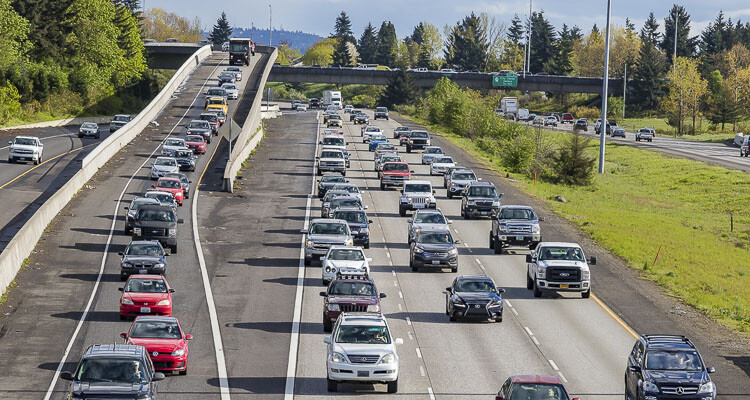
Charles Prestrud of the Washington Policy Center believes the budget does not fund WSDOT preservation and maintenance at the level needed to achieve a state of good repair
Charles Prestrud
Washington Policy Center
On April 23rd the Washington State Legislature passed a $13.4 billion transportation budget for the 2023-2025 biennium.
The bill provides $5.4 billion for WSDOT highway projects including the I-5 Columbia River Bridge, the SR 167/SR 509 Gateway projects, and the US 395 North Spokane Freeway. The budget restores funding for highway projects the Governor’s budget proposal deleted or pushed out to future budgets.

The budget includes $1.3 billion for the Washington State Ferry System. That is intended to cover the cost of five new hybrid-electric ferries, though the competitive procurement process is just starting so the ultimate cost is still to be determined. The first of the new ferries, which are urgently needed, is not expected to enter service before 2027. In recognition of the need to keep WSF‘s aging fleet operating longer than previously planned, the budget includes additional funding for repair and maintenance.
The transportation budget was boosted by revenue from the Climate Commitment Act. When that Act was passed the legislature-imposed restrictions on the types of projects and programs that could be funded with the revenue. The intent was to direct the funds to programs that reduce CO2 emissions rather than highway projects.To that end the transportation budget includes close to a billion dollars for various transit, electrification, bike, and pedestrian projects, as well as incentive programs.
As is typical, the transportation budget also includes funding for studies designed to inform future decisions. These include a study of public-private partnerships, a state-wide retail delivery fee, local jurisdiction implementation of projects on State Highways, I-5 planning, implementation of vehicle miles traveled targets, etc. These items and others will be covered in future blog posts.
The budget is also noteworthy for what isn’t in it. A bill proposing a mileage tax was introduced in the session, but it did not pass out of committee and the budget does not assume one will be imposed in this biennium. The budget does include funding for further study of the steps needed for future implementation of a mileage tax/Road User Charge.
The budget, though it covers a lot of ground, does not fund WSDOT preservation and maintenance at the level needed to achieve a state of good repair. As a result the backlog of preservation and maintenance work is likely to increase. WSDOT has also expressed concern about their ability to complete all the construction projects funded by the legislature.
As of Friday, April 28, the transportation budget bill, which was approved in a unanimous vote by the House and a 46-3 vote in the Senate, is awaiting the Governor’s signature.
Charles Prestrud is the director of the Coles Center for Transportation at the Washington Policy Center.
Also read:
- Belkot speaks before C-TRAN board; directors pause vote on light rail funding language until JulyMichelle Belkot spoke at Tuesday’s C-TRAN board meeting, calling her removal from the board unlawful; directors postponed a vote on light rail funding language until July amid legal challenges.
- Travel Advisory: Expect delays on northbound I-5 near RidgefieldWSDOT is warning travelers to expect delays near Exit 14 on northbound I-5 in Ridgefield as crews begin barrier and lane improvement work supporting future development.
- Large crowd expected at C-TRAN Board of Directors Meeting Tuesday, April 15A large turnout is expected at the April 15 C-TRAN board meeting, where public input and a key vote on light rail funding will follow the recent removal of Michelle Belkot.
- Letter: ‘The IBR needs a more cost-effective design’Bob Ortblad argues the I-5 Bridge replacement project is overbudget and inefficient, urging a more cost-effective tunnel alternative to avoid excessive tolls and taxpayer burden.
- Clark County beginning installation of upgraded traffic signals in mid-AprilClark County will begin upgrading multiple traffic and pedestrian signals in mid-April to improve safety, accessibility, and transportation technology.









